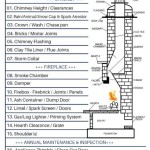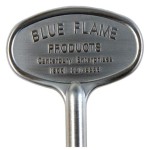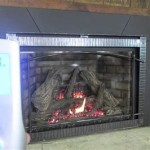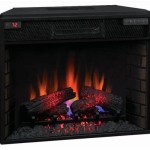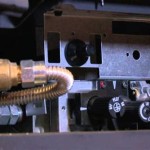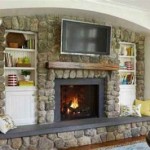Pot Belly Gas Fireplaces: A Comprehensive Overview
Pot belly gas fireplaces offer a blend of classic aesthetics and modern convenience, providing supplemental heating and a visually appealing focal point for various living spaces. These fireplaces, inspired by the traditional pot belly stoves, utilize gas as their primary fuel source, offering a cleaner and more efficient alternative to their wood-burning counterparts. This article delves into the characteristics, advantages, installation considerations, and maintenance aspects of pot belly gas fireplaces.
The design of a pot belly gas fireplace typically incorporates a rounded or bulbous body, reminiscent of the older pot belly stoves. This distinctive shape often features intricate detailing, such as cast iron panels, decorative legs, and simulated flue pipes. The fuel source, typically natural gas or propane, is concealed within the unit, powering a burner system that creates realistic flames. Modern pot belly gas fireplaces are often equipped with features such as remote control operation, thermostatic control, and safety shut-off mechanisms.
The appeal of these fireplaces extends beyond their visual charm. They offer a convenient and relatively clean heating solution, eliminating the need for wood storage, chopping, and the associated mess. Gas fireplaces also provide instant heat, adjustable flame settings, and consistent temperature control. This makes them a practical choice for homeowners seeking supplemental heating and a cozy atmosphere without the maintenance requirements of traditional wood-burning fireplaces.
Advantages of Pot Belly Gas Fireplaces
Pot belly gas fireplaces offer a range of advantages that make them an attractive option for homeowners seeking a convenient and aesthetically pleasing heating solution. These benefits span from ease of use and maintenance to environmental considerations and energy efficiency.
Convenience and Ease of Use: One of the primary advantages of pot belly gas fireplaces is their inherent convenience. Unlike wood-burning fireplaces, they require no manual loading of fuel. Ignition is typically achieved with the touch of a button or the flick of a switch, and the flame height and heat output can be easily adjusted using a remote control or integrated thermostat. This eliminates the need for constant monitoring and adjustment, allowing for a more relaxed and enjoyable experience.
Cleanliness and Low Maintenance: Gas fireplaces produce significantly less ash and soot compared to wood-burning units. This translates to reduced cleaning requirements and a cleaner indoor environment. Regular maintenance typically involves annual inspections by a qualified technician to ensure proper burner function, venting, and gas line integrity. Beyond that, minimal upkeep is required, making gas fireplaces a low-maintenance heating option.
Energy Efficiency and Cost-Effectiveness: Modern gas fireplaces are designed with energy efficiency in mind. Many models feature sealed combustion systems, which draw air from outside the home for combustion and vent exhaust gases directly outside. This minimizes heat loss and improves energy efficiency. While the cost of natural gas or propane can fluctuate, gas fireplaces can be a cost-effective heating solution, particularly when used for supplemental heating in specific areas of the home. The precise cost-effectiveness depends on local fuel prices and the fireplace's thermal efficiency rating.
Environmental Considerations: Compared to wood-burning fireplaces, gas fireplaces produce significantly lower emissions of particulate matter and greenhouse gases. Natural gas and propane are cleaner-burning fuels, resulting in reduced air pollution and a smaller carbon footprint. While gas fireplaces are not entirely emission-free, they represent a more environmentally responsible heating option compared to traditional wood-burning alternatives. Moreover, some models are designed to operate with bio-propane, further reducing their environmental impact.
Installation Considerations for Pot Belly Gas Fireplaces
Proper installation is crucial for the safe and efficient operation of a pot belly gas fireplace. This process involves careful planning, adherence to local building codes, and professional installation by a qualified technician. Several key factors must be considered to ensure a successful and compliant installation.
Venting Requirements: Gas fireplaces require proper venting to safely exhaust combustion gases outside the home. Venting options include direct vent, B-vent, and vent-free models. Direct vent fireplaces draw air from outside for combustion and vent exhaust gases directly outside through a sealed system. B-vent fireplaces utilize existing chimneys or dedicated vent pipes to exhaust gases. Vent-free fireplaces, while requiring careful consideration and adherence to safety guidelines, do not require venting. The choice of venting system depends on the fireplace model, building codes, and existing infrastructure.
Gas Line Connection: Connecting the fireplace to the gas supply line requires expertise and adherence to safety regulations. A qualified gas fitter must perform this task to ensure a leak-free and properly sized connection. The gas line must be appropriately sized to provide adequate gas flow to the fireplace, and all connections must be tested for leaks before operation. Proper gas line installation is paramount to prevent gas leaks and ensure safe operation.
Clearance and Placement: Gas fireplaces generate heat and require adequate clearance from combustible materials. The manufacturer's instructions will specify the minimum clearance requirements for walls, floors, and ceilings. Careful placement is also important to ensure proper air circulation and to avoid obstructing walkways or furniture. Consider the aesthetic impact of the fireplace's location and its integration with the overall room design. Also, verifying local building and fire codes regarding placement near windows and door frames is essential.
Professional Installation: Due to the complexity and safety implications of gas fireplace installation, it is strongly recommended to hire a qualified and licensed technician. A professional installer will ensure that the fireplace is installed correctly, meets all applicable building codes, and operates safely. They will also be able to provide guidance on venting options, gas line connections, and clearance requirements. Professional installation offers peace of mind and guarantees a safe and compliant installation.
Maintenance and Safety of Pot Belly Gas Fireplaces
Regular maintenance and adherence to safety guidelines are essential for ensuring the longevity, efficiency, and safe operation of a pot belly gas fireplace. Proper maintenance can prevent malfunctions, extend the lifespan of the unit, and minimize the risk of fire or carbon monoxide poisoning.
Annual Inspection and Cleaning: It is recommended to have a qualified technician inspect and clean the gas fireplace annually. This inspection should include checking the burner system for proper operation, cleaning the burner ports to remove debris, inspecting the venting system for obstructions, and testing the gas line for leaks. Regular cleaning helps maintain optimal performance and prevents potential hazards.
Carbon Monoxide Detection: Carbon monoxide is a colorless, odorless, and potentially deadly gas that can be produced by malfunctioning gas appliances. It is crucial to install carbon monoxide detectors in the vicinity of the gas fireplace and to test them regularly. Replace the batteries in the detectors at least twice a year and replace the detectors themselves according to the manufacturer's recommendations. Early detection of carbon monoxide can save lives.
Proper Ventilation: While vent-free gas fireplaces are designed to operate without external venting, it is still important to ensure adequate ventilation in the room where the fireplace is located. Open a window or door periodically to allow fresh air to circulate. This helps prevent the buildup of carbon monoxide and other combustion byproducts. Follow the manufacturer's recommendations regarding ventilation requirements for vent-free models.
Safe Operating Practices: Adhere to all safety guidelines provided by the manufacturer. Never use the fireplace to burn wood or other materials. Keep combustible materials away from the fireplace. Supervise children and pets when the fireplace is in operation. Never leave the fireplace unattended for extended periods. By following safe operating practices, you can minimize the risk of accidents and ensure a safe and enjoyable fireplace experience.
In summary, pot belly gas fireplaces provide a blend of aesthetic appeal and functional heating, making them a popular choice for homeowners. Understanding their advantages, installation requirements, and maintenance needs is crucial for ensuring their safe and efficient operation. Proper installation and regular maintenance, performed by qualified professionals, are paramount to maximizing the benefits and minimizing the risks associated with these appliances.

Thelin Gnome Gas Stove Hearth S Great American Fireplace In Menomonie Wi

Thelin Gnome Gas Stove Hearth S Great American Fireplace In Menomonie Wi

Thelin Gnome Gas Stove Hearth S Great American Fireplace In Menomonie Wi

Thelin Gnome Gas Stove Hearth S Great American Fireplace In Menomonie Wi

The Pot Belly Stove Co Specialists In Wood Gas And Ducted Heating Log Fires Bbq S Air Conditioning

Thelin Gnome Gas Stove Hearth S Great American Fireplace In Menomonie Wi

Freestanding Stoves Wing And More

Free Standing Gas Stoves In The Brunswick Md Area Fireplace Service

The Pot Belly Stove Co Specialists In Wood Gas And Ducted Heating Log Fires Bbq S Air Conditioning

Thelin Gnome Gas Stove Hearth S Great American Fireplace In Menomonie Wi
Related Posts


